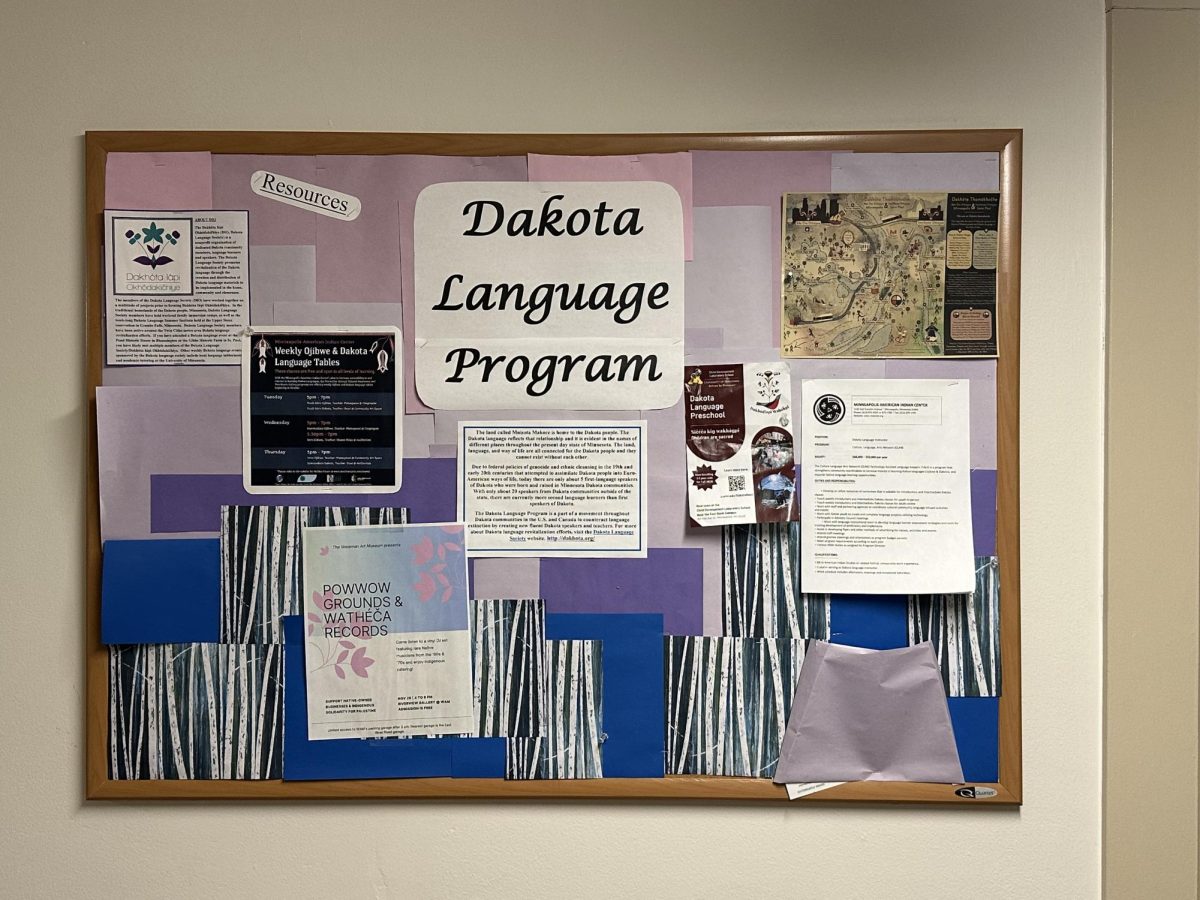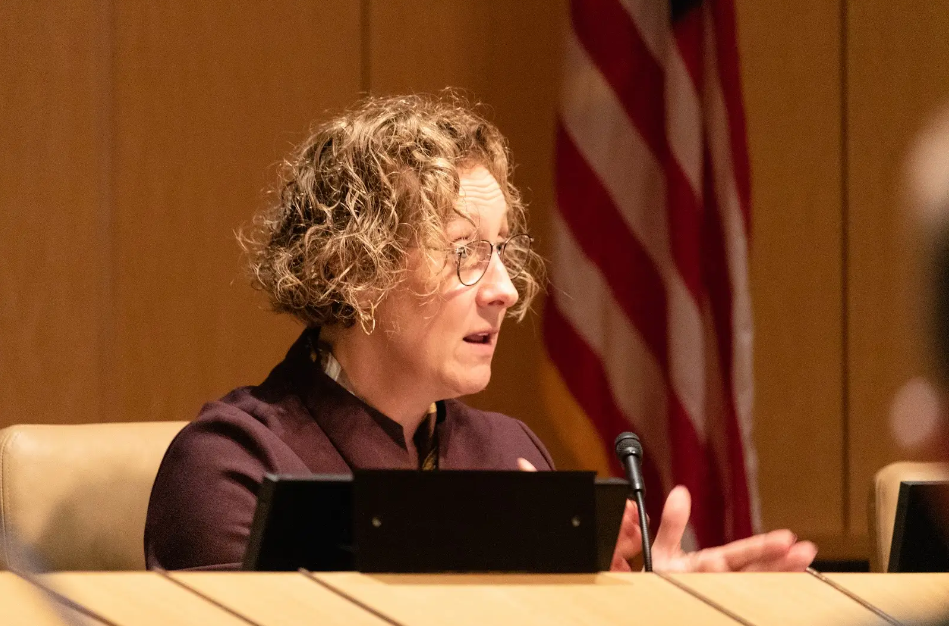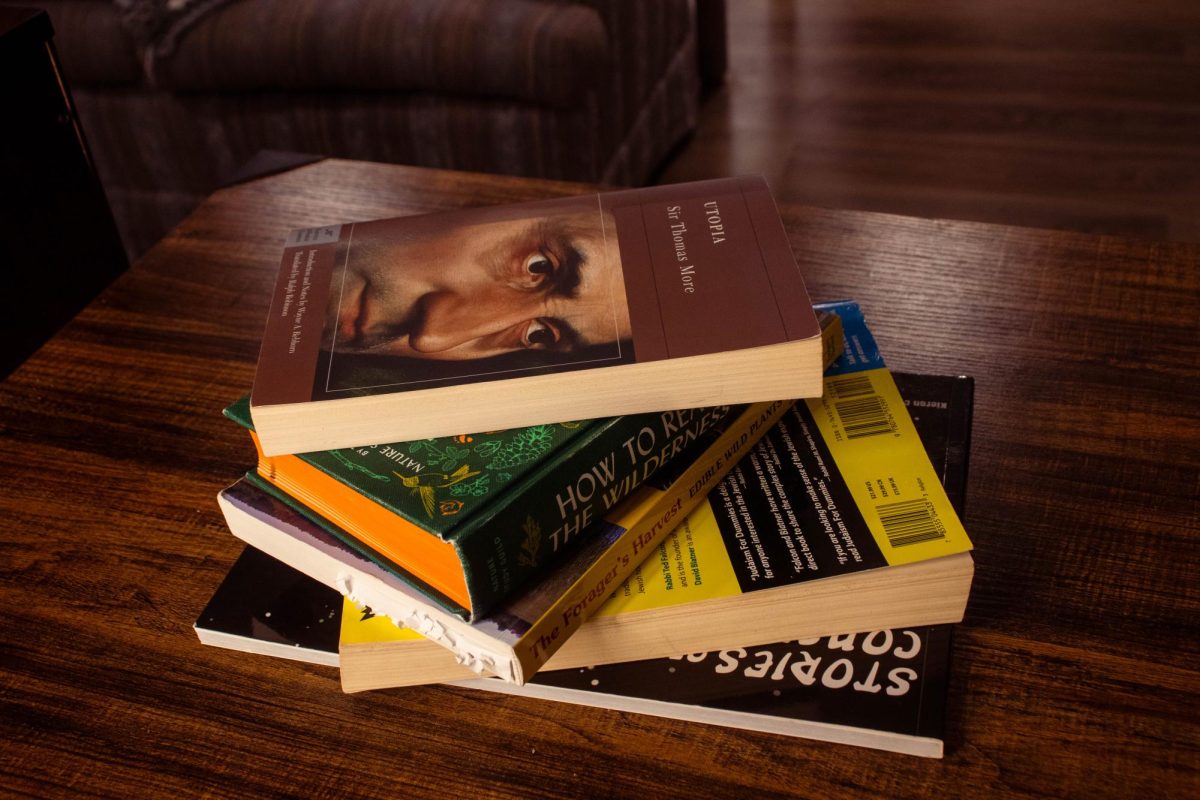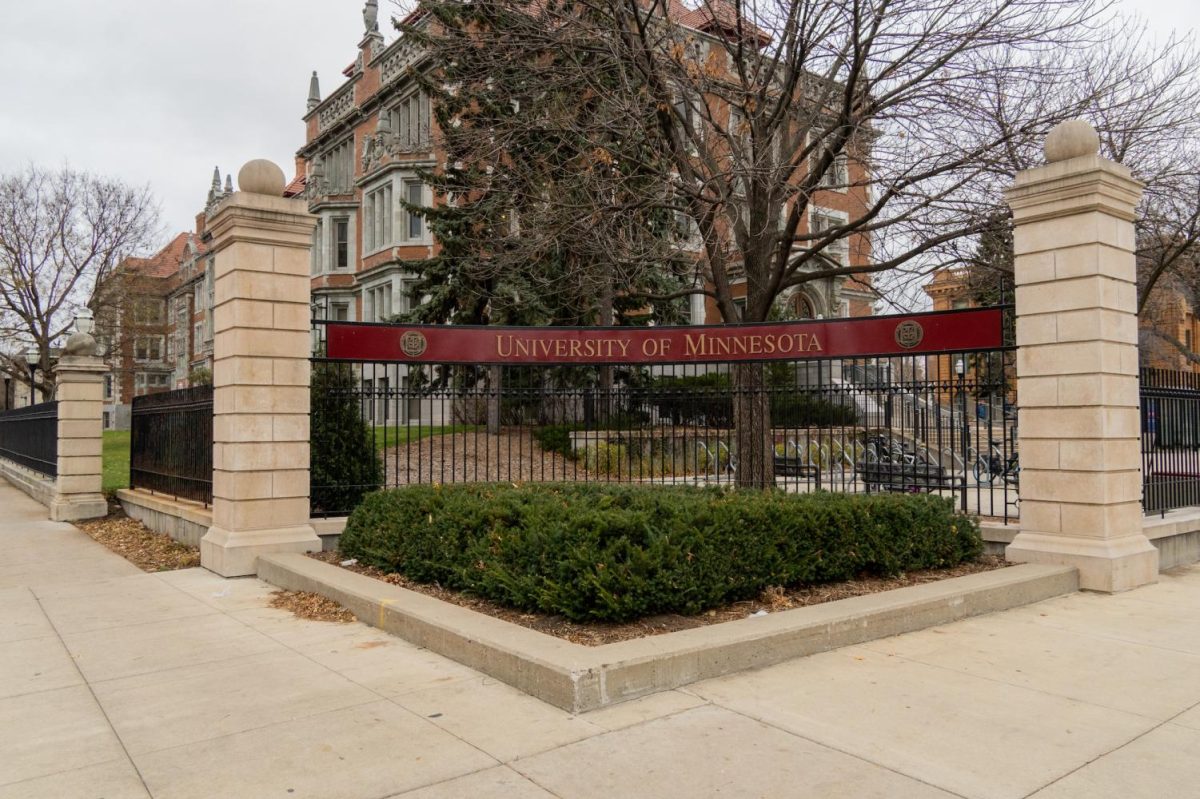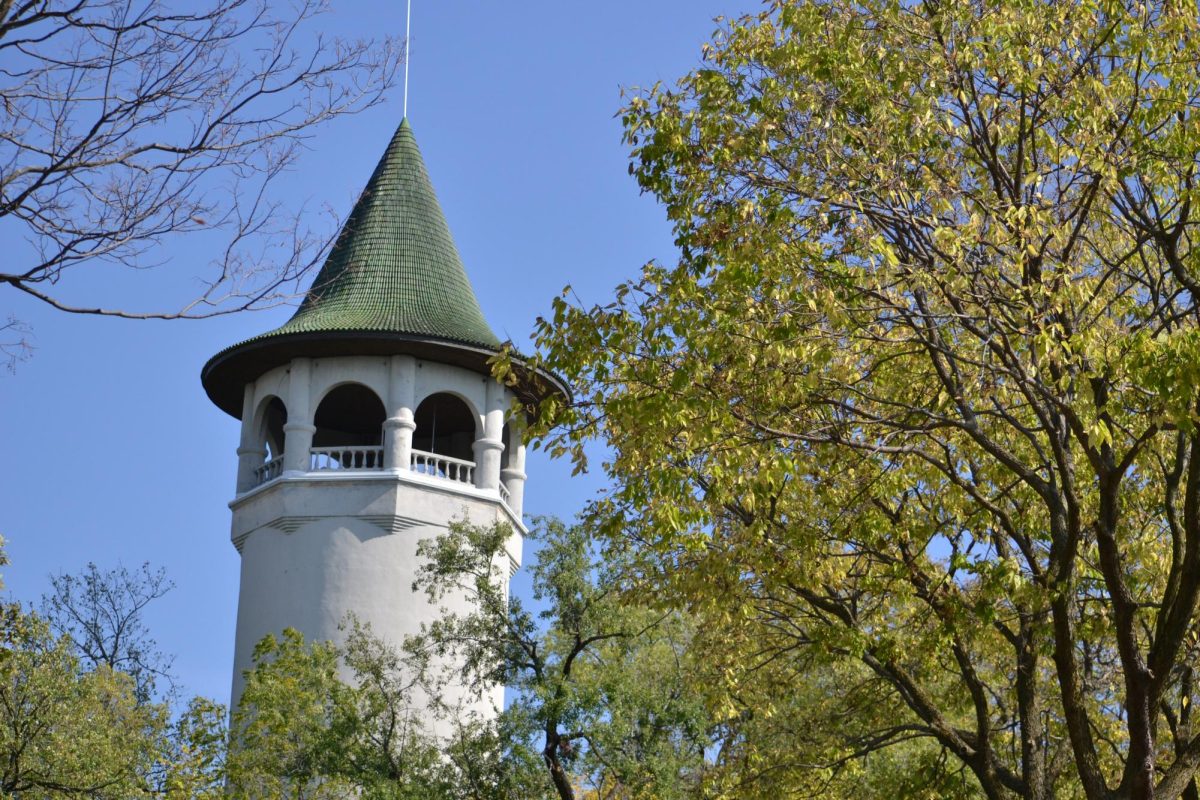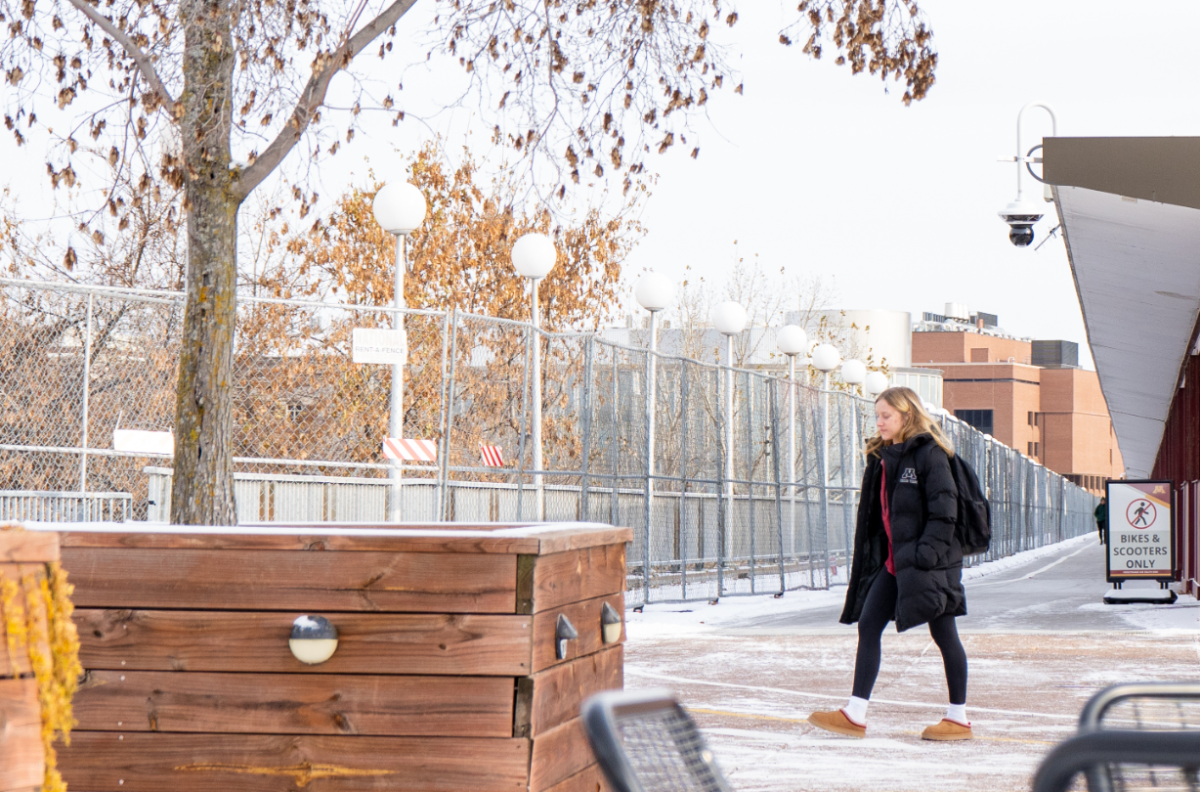With tiles falling off the ceiling, mold growing up the wall and spotty internet, hidden in Scott Hall’s basement is the American Indian Studies department (AIS), with its powerful legacy dating back to the 1960s.
Amidst the Civil Rights Movement and the American Indian Movement (AIM), founded here in Minneapolis, pressure from the Native community to create a space at the University of Minnesota was critical, according to the American Indian Studies history page.
Nicholas DeShaw, the AIS outreach coordinator, said Minnesota has one of the highest native populations in the country, a driving force for how the AIS department came to be.
“We come out of the Civil Rights Movement, we were an integral part of AIM in the ‘60s and ‘70s,” DeShaw said.
Nick Estes, an assistant professor in AIS, said the department’s founding was community-focused, creating a space for Indigenous students and AIM members on campus.
“The project of AIS is working and strengthening Indigenous communities and Indigenous sovereignty,” Estes said.
Curriculum in AIS offers a wide range of classes with two major tracks, general or language, with topics like Tribal policy and law, history, social justice and language revitalization, according to the AIS information page.
AIS also offers a minor, allowing students to supplement their majors in other departments. The department is world-renowned for being the first in the world in addition to its unique language departments, according to DeShaw.
“We are the only place in the world where you can get a four-year degree in Ojibwe, and the only place in the world you can get a four-year degree in Dakota,” DeShaw said.
The 2023-24 academic year is the first year the Dakota language major has been implemented, with several students on track to be the first Dakota language graduates, according to DeShaw.
“Our current students who are Dakota language majors are the first Dakota language majors, ever, in the history of the world,” DeShaw said.
Taylor Fairbanks, a second-year AIS major, said the well-known legacy of the department is why she came to the University. With distinguished programs, its legacy has allowed AIS to draw in students just for its programming.
“It was one of the only reasons I chose to come here, because I wanted to go to a college that had a strong and unique AIS department,” Fairbanks said.
After being in the basement of Scott Hall for over 50 years, AIS will move to Pattee Hall, one of the oldest standing buildings on the University’s campus.
“Moving to Pattee does a lot of things for us,” DeShaw said. “One, it conceptualizes us as a department so we will have space to not only house our department but have our classes in the same building.”
Currently, AIS classes are spread throughout campus in buildings like Burton Hall, Appleby Hall and Nicholson Hall, according to the College of Liberal Arts Class Info page.
With the lack of space in Scott Hall, DeShaw said the department is excited about the opportunity to host community events in its own space.
Even with all these achievements, AIS stands as a sign of resilience in the face of its history of being underfunded, Estes said.
Last year AIS faced another budget cut to an already underfunded department, with the cut being in language instruction, according to DeShaw.
“We are constantly in a position where we have to fight for what we have, have to fight for recognition, and we have to fight for the funding we have, and to get even more funding,” DeShaw said.
Controversy rocked AIS after they were made aware the Dakota Language Peoples Fund, a grant from the State of Minnesota to assist the revitalization of Dakota language, was being used to pay instructors salaries, DeShaw said.
“The state allocated money to be used specifically for Dakota language revitalization to be given to us and our department,” DeShaw said.
This money was intended to be used to help grow programming, DeShaw said, not salaries.
In 1989, the University took away all tenure for AIS faculty, making several faculty leave the department, DeShaw said. It was not until almost 20 years later in 2007, that the department got them back.
“The University has plenty of resources to not only obliterate structural issues within the American Indian Studies department, but it also has the resources to make and do right by the Indigenous nations,” Estes said.
Fairbanks said she believes a lack of funding has directly affected her education, with the lack of faculty meaning less class variety.
“Many of the current faculty members are being overworked,” Fairbanks said.
Estes said he has voiced his frustrations with the lack of Indigenous hires, not just in the AIS department but also University-wide.
“There shouldn’t be just Native hires in the American Indian Studies department,” Estes said.
Given the cost of tuition, Fairbanks raised her concerns about the fact that she has to pay to learn about her own history.
“We are coming to get a higher education to learn our own history, culture, and language which was originally stolen from us,” Fairbanks said. “By coming to this University, we have to buy back what was stolen from us.”
With the move to Pattee Hall, a doctorate program in the process of being approved and the new Dakota Language major, students and faculty are excited about the next steps, even without proper funds.
“The funding is there, it’s just a matter of if the University wants to do what is right,” Estes said.
The funding for this reporting position comes from a grant given to The Minnesota Daily from the Hubbard School of Journalism and Mass Communication, with money from the Freedom Forum. The Daily retains editorial independence from the University of Minnesota in all forms, including this reporting position.


